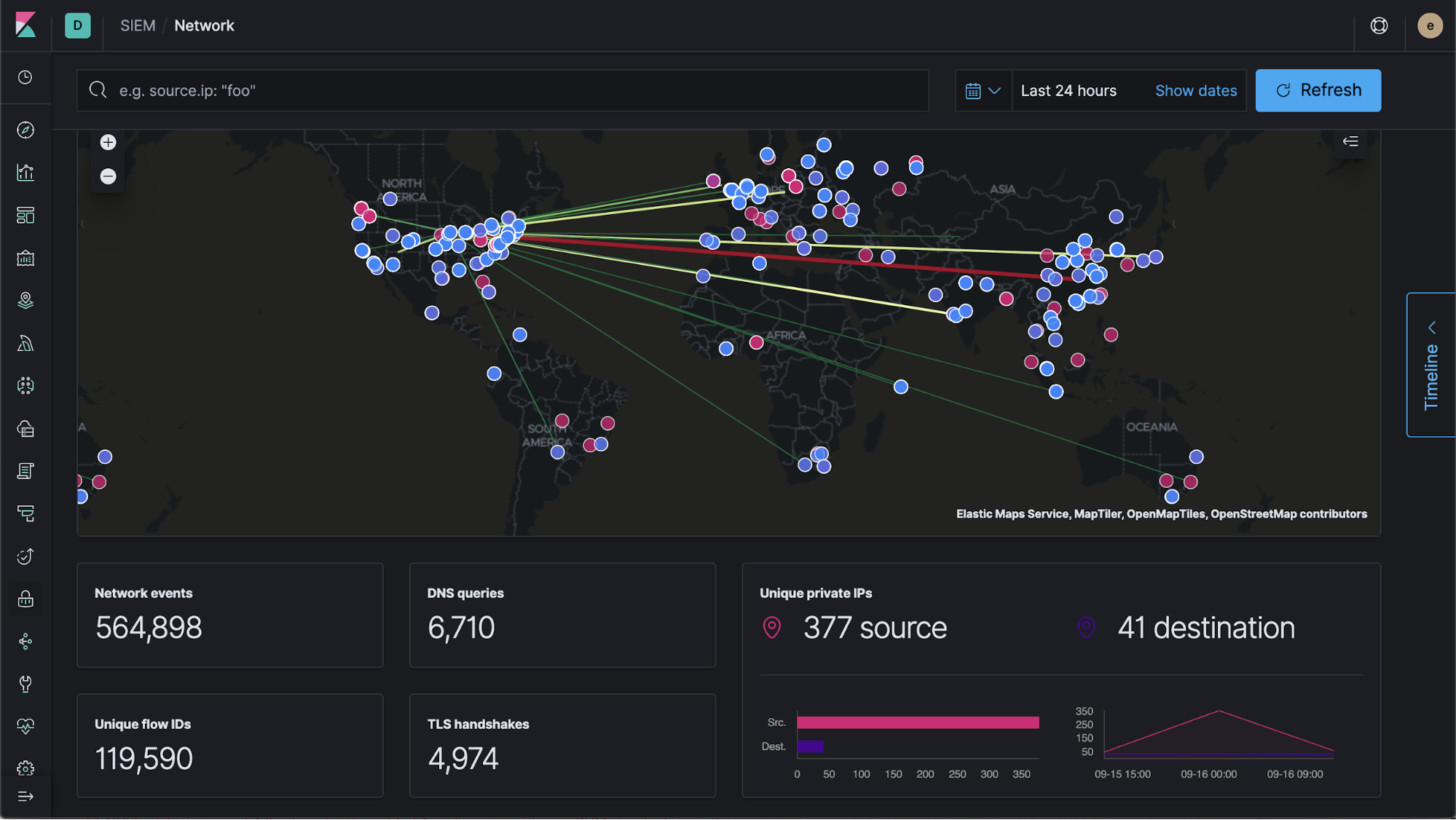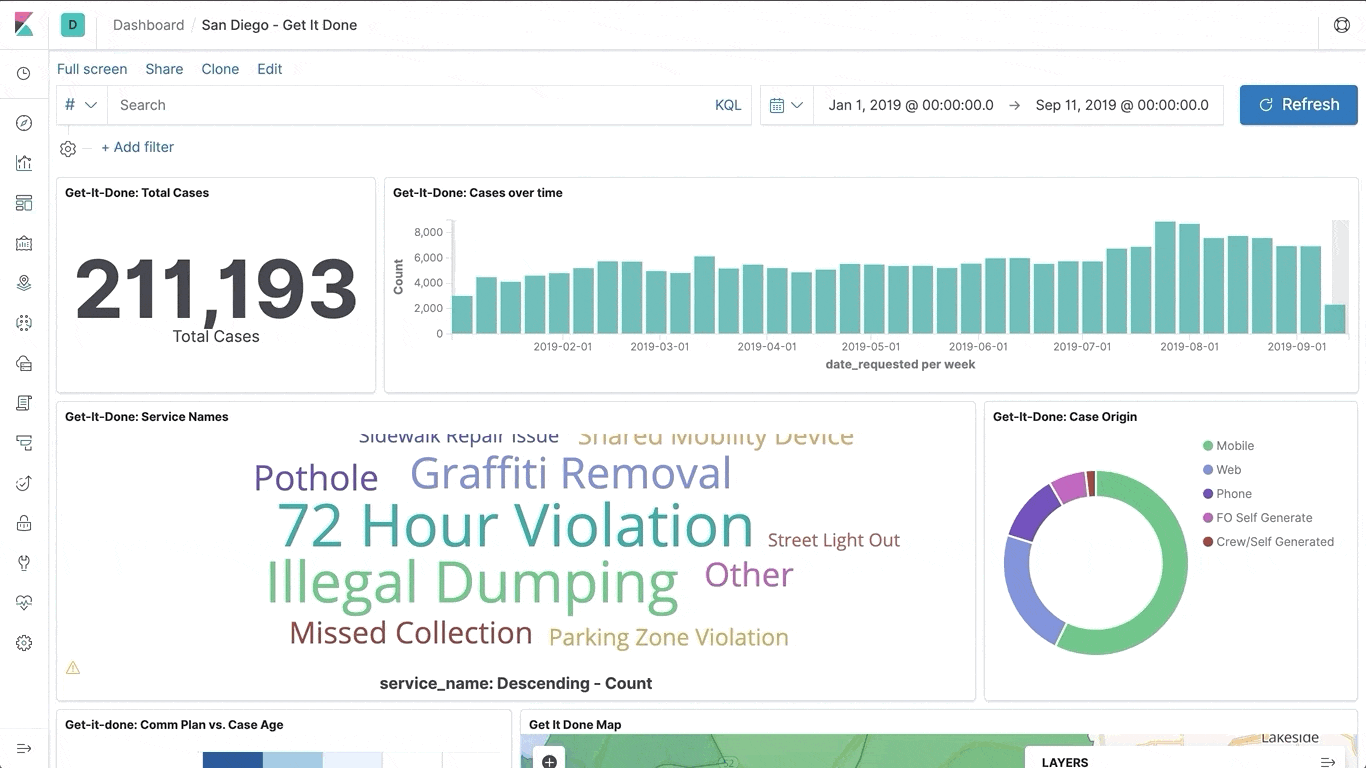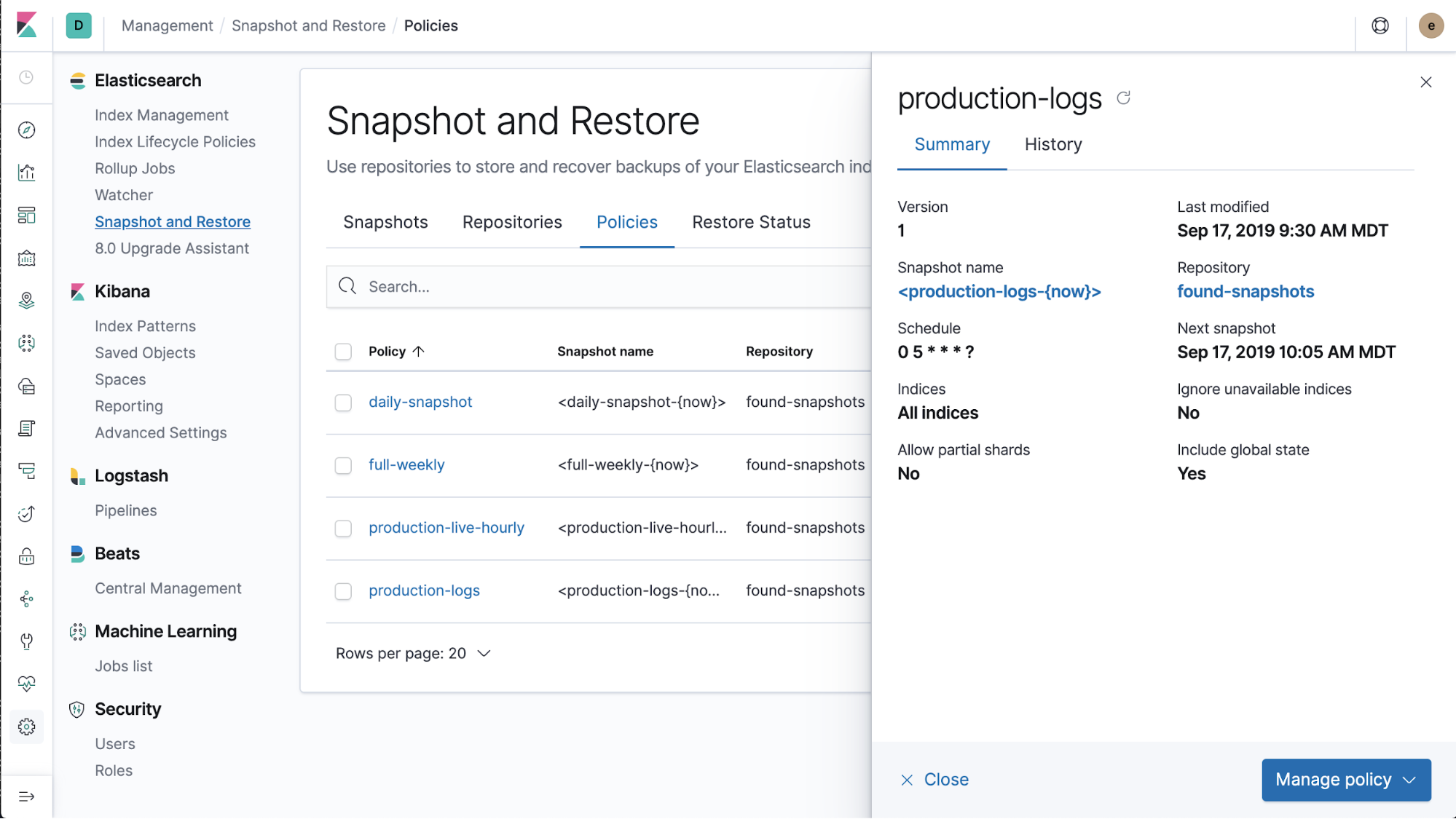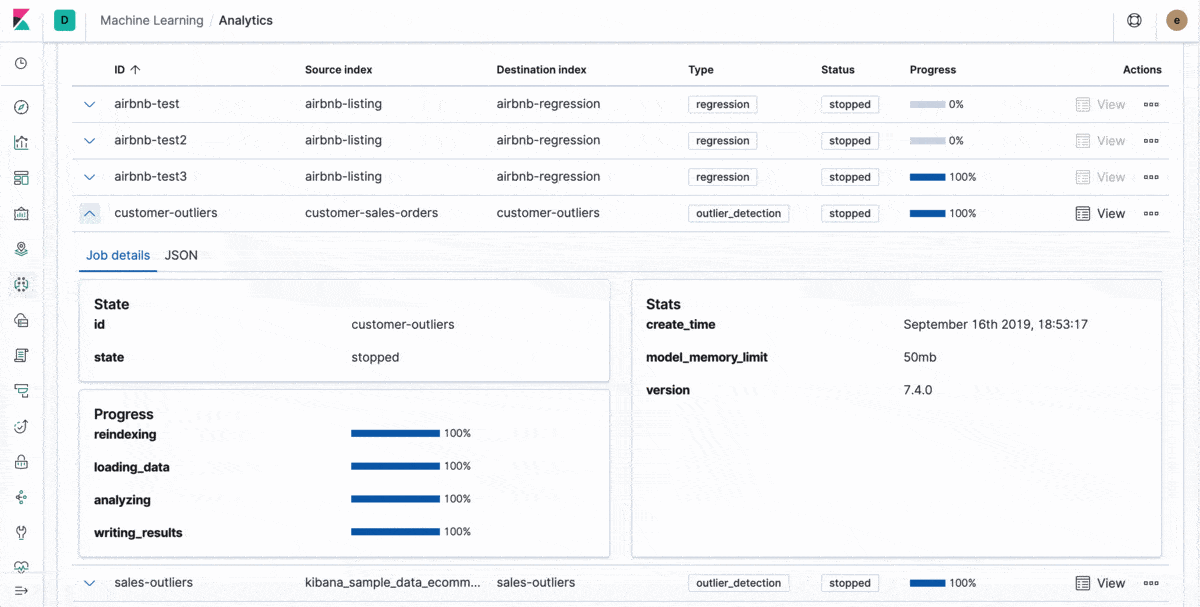7.4.0 release highlights
edit7.4.0 release highlights
editEach release of Kibana brings new features and product improvements. Here are the most notable feature and user experience changes in 7.4.
For a complete list of highlights, see the Kibana 7.4 release blog.
Public Key Infrastructure (PKI) authentication
editBuilding off the success of feature controls in 7.2 and support for Kerberos in 7.3, Kibana 7.4 adds support for another highly requested authentication mechanism, Public Key Infrastructure (PKI). With native support for PKI authentication, users are now able to log into Kibana using X.509 client certificates and a two-way encryption system. This provides new ways to authenticate Kibana—from general client certificate authorization to identity card access. To start using PKI in production, check out our documentation.
SIEM gets maps
editA geospatial perspective is especially useful for security events data sets. In 7.4, SIEM embeds maps directly in the Network interface to show common request paths between origin and destination sources. For more information, see the SIEM 7.4 release blog.

Reusable saved queries and filters
editHave you ever written a query in Kibana that you’ve wanted to reuse? 7.4 introduces saved queries, which save the contents of the search bar query, filter pills, and time filter. You can now reuse your saved query in dashboards, visualizations, maps, and saved searches, and share them with other users.

Snapshot lifecycle management
editAdding to the Snapshot and Restore UI introduced in 7.2, Kibana has a new view for managing snapshot lifecycle policies. The Policies view provides an overview of your snapshot status, a history of the snapshots taken with the defined policies, and a wizard for creating a new policy.

Outlier detection on transforms
edit[preview] This functionality is in technical preview and may be changed or removed in a future release. Elastic will work to fix any issues, but features in technical preview are not subject to the support SLA of official GA features. In 7.3, Kibana added an API that provided outlier detection analysis. In this release, Kibana has a new view in Machine Learning where you can create, manage, and view your outlier detection jobs and their results. Because the results are just another index, you can create some insightful visualizations and maps based on the outliers found in your entity-centric data.
